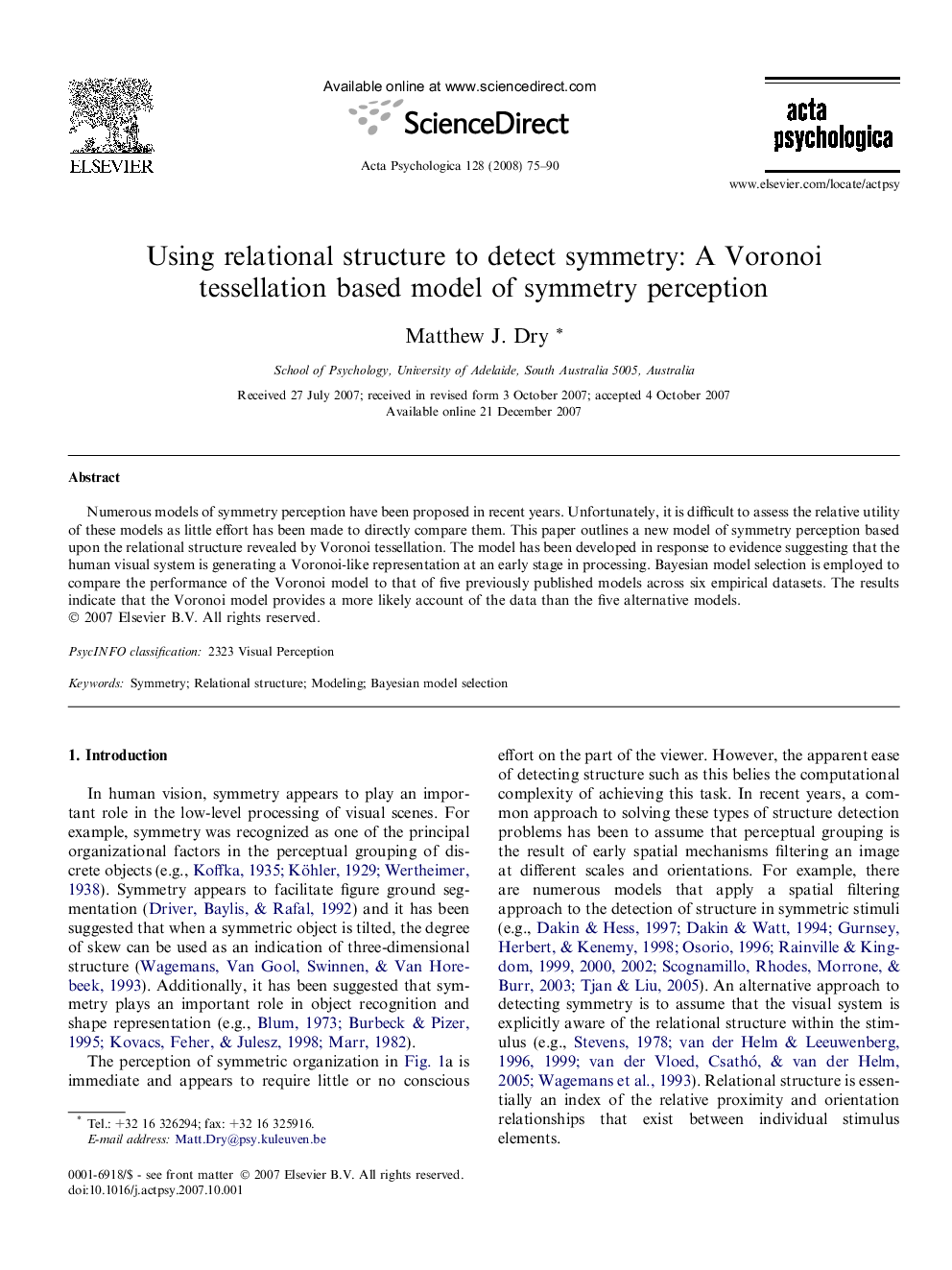| Article ID | Journal | Published Year | Pages | File Type |
|---|---|---|---|---|
| 920421 | Acta Psychologica | 2008 | 16 Pages |
Numerous models of symmetry perception have been proposed in recent years. Unfortunately, it is difficult to assess the relative utility of these models as little effort has been made to directly compare them. This paper outlines a new model of symmetry perception based upon the relational structure revealed by Voronoi tessellation. The model has been developed in response to evidence suggesting that the human visual system is generating a Voronoi-like representation at an early stage in processing. Bayesian model selection is employed to compare the performance of the Voronoi model to that of five previously published models across six empirical datasets. The results indicate that the Voronoi model provides a more likely account of the data than the five alternative models.
